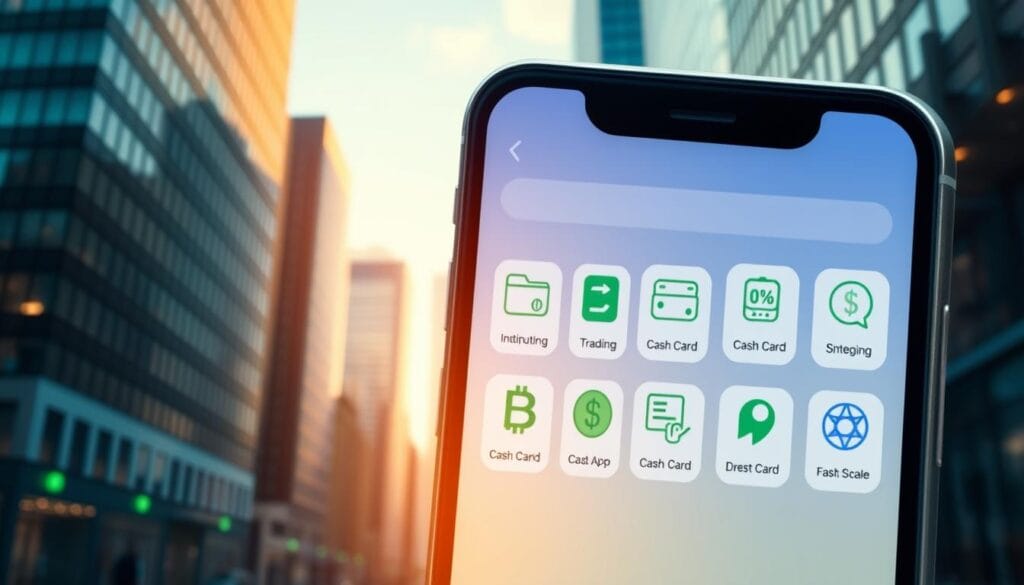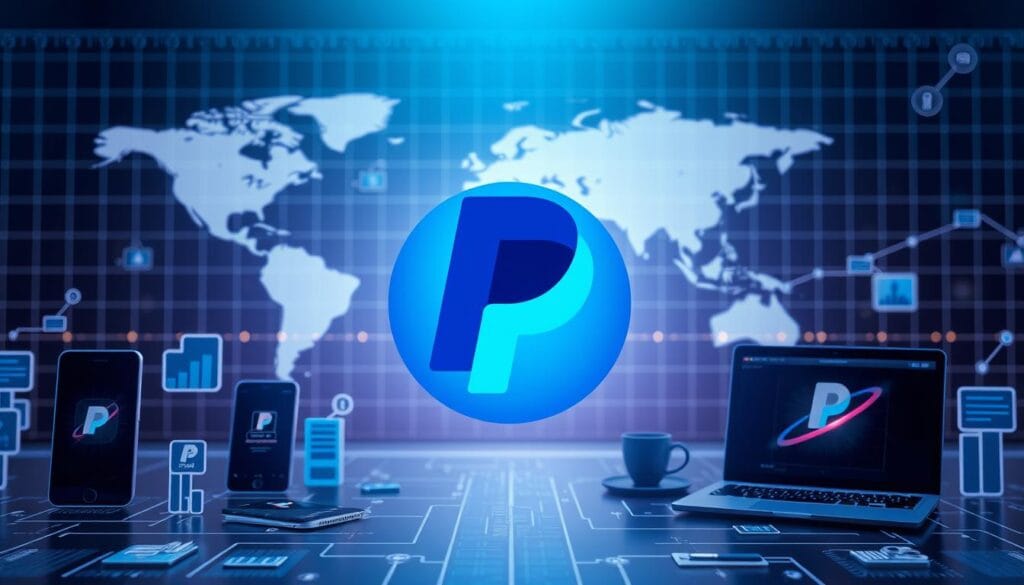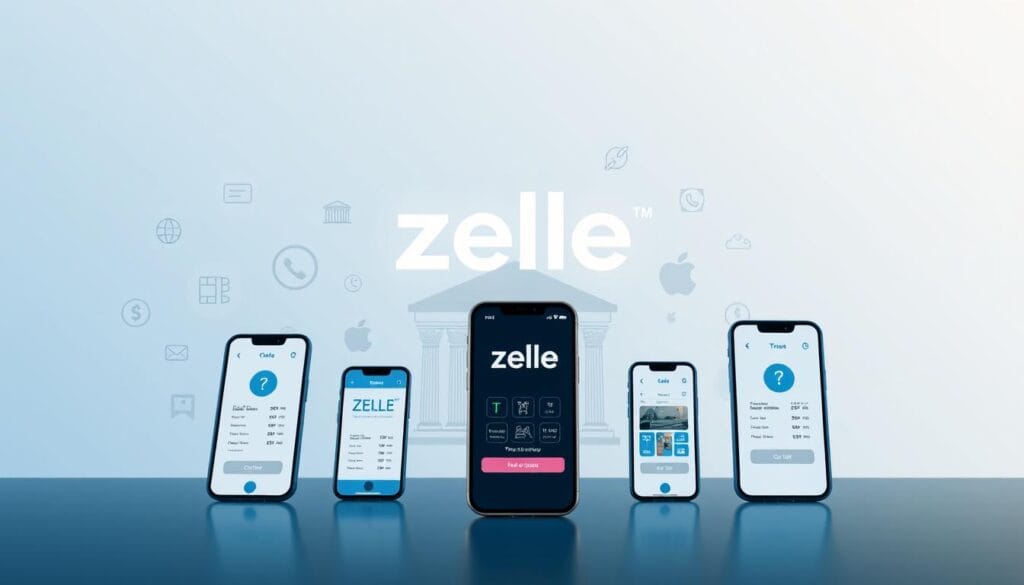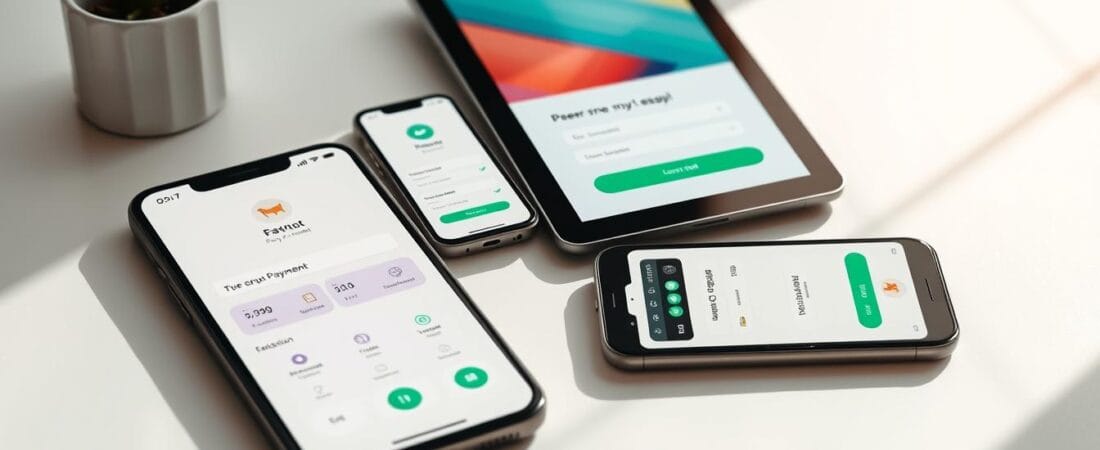Did you know that 94% of millennials use mobile payment apps? This staggering statistic highlights how digital transactions have become a cornerstone of modern finance. As we move into 2025, the landscape of these services is evolving rapidly, with significant changes shaping how we send money.
For instance, Zelle has discontinued its standalone app, now requiring users to access it directly through their bank accounts. Similarly, Google Pay has shut down in the U.S., leaving users to transfer their balances to other platforms. These shifts underscore the importance of choosing the right service for your needs.
Today, top contenders like Cash App, PayPal, Venmo, Zelle, and Apple Cash dominate the market. Each offers unique features, from speed and security to seamless ecosystem integration. Selecting the best option depends on your priorities, whether it’s for personal use or online purchases.
With rising fraud risks and varying FDIC insurance across platforms, it’s crucial to stay informed. This guide will help you navigate the options and make the right choice for 2025.
Key Takeaways
- 94% of millennials rely on mobile payment services.
- Zelle now operates exclusively through bank accounts.
- Google Pay has ceased operations in the U.S.
- Top platforms include Cash App, PayPal, Venmo, Zelle, and Apple Cash.
- Consider speed, security, and integration when choosing a service.
- Fraud risks are increasing with social payment integrations.
- Explore cashback and rewards apps for additional benefits.
Introduction to Peer-to-Peer Payment Apps

Digital tools for money transfers are reshaping how we handle finances. These platforms, often referred to as peer payment apps, allow users to send funds directly to others using just a phone number or email address. This simplicity has made them a cornerstone of modern financial technology.
By 2025, the market has seen significant consolidation. Over 72% of banks now integrate these services directly into their systems. This integration ensures smoother transactions and broader accessibility for users. Most transfers are fee-free, making them an attractive alternative to traditional methods.
However, safety concerns remain a critical issue. According to Consumer Reports, losses from fraud risks in these platforms reached $1.3 billion in 2024. Additionally, only 38% of users maintain balances that are FDIC-insured, leaving many vulnerable to financial losses.
Data privacy is another growing concern. A staggering 89% of these apps share geolocation data with third parties. This raises questions about consumer protections and the need for stricter regulations. Currently, there are no federal chargeback rights for these transactions, leaving users with limited recourse in case of disputes.
Despite these challenges, the platforms are evolving. Services like Venmo and PayPal now offer international transfer capabilities, expanding their reach. Compared to traditional banking, these apps process transactions three times faster, making them a preferred choice for many.
Cash App: Versatile and User-Friendly

With over 57 million active users, Cash App has become a leading choice for digital transactions. Its seamless blend of financial tools and user-friendly design makes it a standout in the market. From sending money to investing in stocks, the platform offers a wide range of features.
Key Features
Cash App excels in versatility. Users can trade stocks and bitcoin directly from the app, making it a unique option for investors. The debit card, known as the Cash Card, offers rewards like discounts at popular vendors, saving users an average of $12 monthly.
Another standout feature is its tax filing integration through Credit Karma. This partnership simplifies financial management for users. Additionally, Cash App Pay allows QR code payments at merchants, expanding its usability beyond personal transfers.
Benefits and Drawbacks
One of the biggest advantages is its high transfer limit of $7,500 per week, surpassing competitors like Zelle. Security is also a priority, with 92% of users adopting biometric authentication. FDIC coverage is available, but only for those who enroll in the Cash Card program.
However, the platform isn’t without drawbacks. A 3% credit card funding fee and instant cash-out fees ranging from 0.5% to 1.75% can add up. Scam risks are also notable, with 22% of fraud cases involving fake investment schemes.
Compared to Venmo, Cash App offers superior trading features but lacks the social tools that make Venmo popular. Despite this, its comprehensive functionality makes it a top choice for many users.
PayPal: A Trusted Name in Digital Payments

PayPal has long been a cornerstone of digital finance, offering both personal and business solutions. With over 431 million active accounts in 2025, it remains a dominant force in the industry. Its hybrid model combines peer-to-peer transfers with merchant services, making it versatile for various needs.
How It Works
PayPal allows users to send money using an email address or phone number. Transactions are processed quickly, with a single transaction limit of $60,000. Bank transfers are free, but instant withdrawals come with a fee. This flexibility makes it suitable for both personal and business use.
Goods & Services protection is a standout feature, handling over 1.5 million dispute cases monthly. This ensures buyer and seller security, fostering trust in the platform. Additionally, PayPal Credit offers approval limits up to $250,000, though with a 28.49% APR.
Advantages and Limitations
One of PayPal’s key strengths is its international reach. It supports transactions in 25 currencies across 200+ countries. Security is robust, with a 98% phishing attempt detection rate. However, FDIC insurance for balances requires Green Dot enrollment, which not all users opt for.
While PayPal is widely accepted, with 87% of top retailers integrating it into their checkout systems, transfer delays can be a drawback. Bank clearance periods typically take 3-5 business days, which may not suit urgent needs.
For those interested in cross-border solutions, PayPal’s capabilities complement other services like blockchain-based payments. This makes it a comprehensive choice for global transactions.
Venmo: Social and Convenient

Venmo has become a go-to platform for quick and social transactions, especially among younger users. With 78 million active users, mostly under 35, it handles $8 billion in quarterly payment volume. Its unique blend of convenience and social features makes it a standout in the digital finance space.
Unique Features
Venmo’s social feed is a defining feature, allowing users to share and comment on transactions. While this adds a fun, interactive element, it also raises privacy concerns. The platform’s default settings make transactions public, which has led to increased scrutiny.
The Venmo Card offers 3% cashback on dining, making it a leader in this category. This debit card is a favorite among users who frequently dine out. Additionally, the split bill feature is highly popular, with a 63% user adoption rate, simplifying shared expenses among friends.
Venmo benefits from its synergy with PayPal, sharing a robust security infrastructure. This integration enhances user trust and safety. However, it lacks international capabilities for personal transfers, limiting its global appeal.
Pros and Cons
One of Venmo’s strengths is its strong social features, which appeal to Gen Z users. 68% of this demographic prefer Venmo for shared expenses. The platform also offers merchant services, charging 2.9% + $0.30 per transaction, making it versatile for both personal and business use.
However, Venmo has its drawbacks. Instant transfers come with a 1.75% fee, capped at $25. Scam trends are on the rise, with a 34% increase in payment reversal fraud. Compared to Cash App, Venmo offers stronger social tools but lacks investment options.
For those managing their finances, Venmo’s features complement other tools like personal finance apps. This makes it a valuable addition to your financial toolkit.
Zelle: Fast and Bank-Integrated

Known for its speed and seamless integration, Zelle is transforming how Americans send money. With over 1,700 participating U.S. financial institutions, it has become a go-to platform for domestic transfers. Since April 2025, Zelle operates exclusively through bank accounts, ensuring a streamlined experience for users.
Enrollment is straightforward, with 87% of users automatically signed up through their partner banks. This bank-integrated approach eliminates the need for standalone apps, making it more accessible. Transfers are completed in an average of 2.9 minutes, three times faster than traditional ACH methods.
How It Works
Zelle allows users to send money using just a phone number or email address. The platform’s real-time capabilities make it ideal for urgent transactions. Weekly send limits are capped at $5,000, though this varies by bank. For businesses, Zelle has seen a 23% adoption rate among small enterprises, thanks to its efficiency.
Security is a priority, with transactions protected by the participating banks’ protocols. However, Zelle lacks buyer protection for authorized payments, which has led to concerns. In 2024, authorized push payment scams accounted for $500 million in losses, highlighting the need for caution.
Benefits and Drawbacks
Zelle’s speed and integration are its standout features. Compared to Venmo, it offers faster transfers but lacks social tools. Mobile check deposit integration through bank apps adds convenience, but the platform’s U.S.-only service limits its global appeal.
One major drawback is the irreversibility of transactions. Disputes are rarely resolved, with 92% of cases remaining unresolved. This emphasizes the importance of verifying recipient details before sending funds. For more insights on secure transactions, explore open banking benefits.
Despite these challenges, Zelle remains a reliable choice for quick, fee-free transfers within the U.S. Its bank-integrated model ensures security and efficiency, making it a preferred option for many users.
Google Pay: Seamless and Integrated
Google Pay once revolutionized how users handled digital transactions. Its seamless integration with NFC payments made it a favorite among tech-savvy consumers. However, the U.S. shutdown completed on June 4, 2024, marked the end of an era for this platform.
With 300 million global users at the time of discontinuation, Google Pay was a dominant force in digital finance. Its balance transfer deadline of June 3, 2024, prompted users to migrate their funds to alternatives like Google Wallet or other platforms.
Features and Functionality
Google Pay’s transition to Google Wallet has reshaped tap-to-pay functionality. Historically, it boasted 94% NFC terminal compatibility, making it a leader in contactless payments. This feature remains active in Google Wallet, ensuring continuity for users.
The sunset of its peer-to-peer (P2P) service impacted 12 million U.S. users, who had to seek alternatives. However, the web version still allows balance management, providing a lifeline for those who missed the transfer deadline.
Advantages and Limitations
Compared to Apple Pay, Google Wallet offers cross-platform compatibility, unlike iOS exclusivity. This flexibility appeals to Android users and those with mixed-device ecosystems. Additionally, bill splitting, a legacy feature, is still available through third-party apps.
Security remains a priority, with tokenization still active in Google Wallet. This ensures secure transactions, even after the discontinued service of Google Pay. Merchant partnerships have also persisted, with 45% maintaining promotional integrations.
Users should note the June 2024 deadlines for final cash-out procedures. The market gap left by Google Pay’s absence remains unfilled, with no native replacement announced. For those exploring alternative solutions, consider blockchain-based fundraising as a modern option.
Apple Cash: Exclusive to Apple Ecosystem
Apple Cash has emerged as a key player in the digital finance space, offering exclusive features for iOS users. Integrated seamlessly into the iOS ecosystem, it allows users to send and receive money directly through iMessage. This functionality has garnered an 89% user satisfaction rate, making it a popular choice for iPhone owners.
One standout feature is its synergy with the Apple Card. Users can earn 4% Daily Cash rewards on transactions, which are instantly available for spending. This integration enhances the platform’s appeal, especially for frequent shoppers. Additionally, Apple Cash supports a weekly send limit of $10,000, catering to both personal and business needs.
How It Works
Apple Cash leverages advanced security measures, including device-specific transaction tokens and biometric authentication. Over 94% of transactions require Face ID or Touch ID, ensuring robust protection against fraud. These features make it a secure option for users prioritizing privacy.
The platform also excels in the education market, with 67% of U.S. universities accepting payments through Apple Cash. This widespread adoption highlights its versatility and reliability. However, it’s important to note that the service is exclusive to Apple devices, with no support for Android or web access.
Pros and Cons
Apple Cash offers several advantages, including superior privacy features and seamless integration with Apple Pay. Its compatibility with 83% of NFC terminals ensures broad merchant acceptance. Family sharing is another benefit, allowing users to pool up to $2,000 monthly for shared expenses.
Despite its strengths, Apple Cash has limitations. The lack of Android or web access restricts its user base. Additionally, it offers no purchase protection for peer-to-peer transactions, leaving users vulnerable to disputes. For those exploring alternative solutions, consider decentralized lending platforms for additional financial flexibility.
Compared to Venmo, Apple Cash provides stronger privacy but lacks social features. Its focus on security and integration within the Apple ecosystem makes it a reliable choice for iOS users. For more insights on Apple Cash and its functionalities, visit this detailed guide.
Conclusion: Choosing the Right Peer-to-Peer Payment App
Selecting the best platform for digital transactions depends on your specific needs. Zelle excels in speed, with transfers often completed in minutes, making it ideal for urgent payments1. PayPal, on the other hand, offers versatility with support for international transactions and high transfer limits up to $60,0001.
For those who value social features, Venmo stands out with its interactive feed and bill-splitting capabilities. However, it’s important to note that storing funds in these platforms is not recommended due to the absence of deposit insurance2. Users should transfer balances to federally insured accounts to minimize risk.
Security is a critical factor. Apple Cash leads with biometric authentication for 94% of transactions, ensuring robust protection3. Meanwhile, Zelle’s integration with bank apps provides an additional layer of safety1.
Emerging trends, such as cryptocurrency support in Venmo, add another dimension to these platforms1. For more insights on managing finances, explore tax filing software options.
Ultimately, the right choice balances speed, security, and functionality. Whether for personal use or business, understanding these factors ensures a seamless and secure experience.

